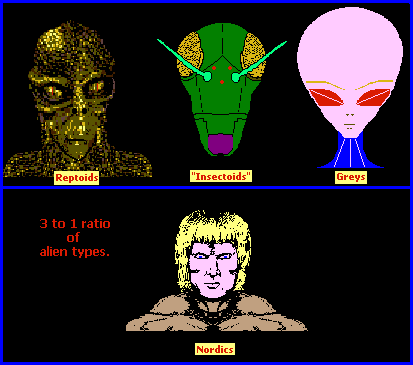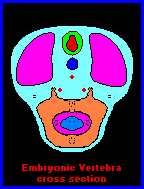Page J
(Study of Threes)
http://threesology.org
Researchers as of 11/20/2019
| 3-to-1 A | 3-to-1 B | 3-to-1 C | 3-to-1 D | 3-to-1 E | 3-to-1 F |
| 3-to-1 G | 3-to-1 H | 3-to-1 I | 3-to-1 J | 3-to-1 K | 3-to-1 L |
| 3-to-1 M | 3-to-1 N | 3-to-1 O | 3-to-1 P | 3-to-1 Q | 3-to-1 FF |
Here are other examples of 3 to 1 ratios taught to children... (The last two are repetitions of previous inclusions):
- Papa bear- Mama bear- Baby bear- Goldilocks
- Lion- Tin man- Scarecrow- Dorothy
- 3 Little Pigs and 1 Big Bad Wolf
- 1- All around the cobbler's bench
- 2- The monkey chased the weasel
- 3- The monkey thought 'twas all in fun
- (Pop -- goes the weasel!)
- 1- Johnny's got the whooping cough and
- 2- Mary's got the measles
- 3- That's the way the money goes
- (Pop -- goes the weasel!)
- 1- Happy Birthday to you
- 2- Happy Birthday to you
- Happy Birthday dear ...
- 3- Happy Birthday to you
- One for the money-
- Two for the show-
- Three to get ready-
- ["and"] Four to go.
Distinct three-part examples of the (game) running expression are:
1- On (or to) your marks-
2- Get set (or Ready set)-
3- Go!
Here is a much used abbreviated variation: Ready- Set- Go!
On several occasions I have encountered mothers telling their children to do something by the count of three.
3 to 1 ratio of alien types commonly found in the area of alien research:
- 1- The Greys (portrayed with a triangular or egg-shaped head)
- 2- The Reptilian form (portrayed with a triangular-shaped head)
- 3- The Insect-like form (portrayed with a triangular-shaped head)
- The Nordics.
It is this last form which is characteristically portrayed as being most human-like. However, if humanity started out as a simple organism, it could be speculated that the above forms are vestigial reflections of a previous lineage, with the Greys either as a very distant initial origin or a reflection of that yet to come. If humanity did start out biologically more simple than current evolution theory suggests, we will need to locate a missing link between plant and say, insect, as well as say, between insect and reptiles. The Nordics are images of an Indo-European past, but it would be interesting to identify whether any non-Indo-European has had such an image come to mind.


As an aside note for those researchers who are not fearful of divergent correlations, take a look at the similarity between the above triangular-shaped images of aliens and the shape of an embryonic vertebra in cross-section. Additionally, notice that there are 3 small triangularly positioned "spots" in between the eyes of the insect and 3 "spots" on the vertebra. If we include the notion of "three eyes" to some alien forms (such as the Greys), since some aliens are said to exhibit a third eye, we have another correlated "three" reference. |
Here is a combined form of the 3 to 1 and the 3:
Rich man - Poor man - Beggar man - Thief (we do not say "Thief man")Doctor - Lawyer - Indian Chief
Some observers may want to label the above example as a "7." They then may want to look at other examples of the "7" and (typically) partition them into examples of the 3 and 4, even though other numerical relations are available to be used.
Here is another example of the "7" that is historically referred to as a 3/4 complementarity:
Arithmetic - Geometry - Music - Astronomy (labeled the Quadrivium)Grammar - Rhetoric - Logic (labeled the Trivium)
3 days of the week named after planets (The other four are named after Norse gods):
- Sunday (day of the Sun): worship of the Sun-
- Monday (day of the Moon): veneration of the moon-
- Saturday (day of Saturn): Roman god worship
...and here's the 4-part section which begins on the 3rd day of the week (The supremacy of the Sun was given the first day of the week. Second in honor was the Moon's day, now called Monday):
- Tuesday- Norse mythology: Tyr/Tiu/Tiw's day- (god of war and strife and son of Odin)
- Wednesday- Norse Mythology: Woden/Odin's day (he was the chief god)
- Thursday- Norse Mythology: Thor's day- (god of thunder and rain and farming and son of Odin)
- Friday- Norse Mythology: Freyja/Frey's day (Freyja was goddess of love and fecundity and her brother Frey was god of Earth's fertility and peace and prosperity)
While not customarily referred to as a 3/4 representation of the "7," it may be of interest for some numerologist's to note that it has been frequently cited that the length of one turn of the helix is approximately 34 Angstroms (34Å) and the spacing between the bases is 3.4 Angstroms (3.4Å). (The exact length of one turn of the helix is said to be 35.7Å.) And for those wondering, there may not now nor ever existed an environmentally equivalent numerical arrangement to account for this value, as a pristine influence of its occurrence.
...let us also include the Christmas tree and ornaments as a symbolic representation of early astronomy:
- The triangular shape of the tree represents the triangular path of the Sun (or moon).
- The frequently used star atop the tree clearly represents stars overhead, or perhaps more specifically, a singular dominant star such as the North Star.
- The often used globe-shaped (glittering) ornaments can be viewed as miniature moons in different positions on the horizon.
With respect to the elements and biological life:
It is said that life consists mostly of four chemical elements: Carbon, Hydrogen, Oxygen, and Nitrogen... frequently referred to by the four letters "CHON." These four elements, (sometimes along with the elements Sulfur and Phosphorus,) are said to make up 99% of all living systems.
| Elemental Composition: | |||||
| Carbon | C | C | C | C | |
| Hydrogen | H | H | H | H | H |
| Oxygen | O | O | O | O | O |
| Nitrogen | N | N | |||
| Phosphorus | P | ||||
| Sulfur | S | ||||
| Component of Life:--- | DNA, RNA, ATP | Carbohydrate | Fat | Protein | Water |
| Organism Composition: | |||||
| Lettuce | 1.2 | 2.1 | 0.4 | 1.3 | 95% |
| Celery | 1.2 | 3.0 | 0.4 | 1.4 | 94% |
| Mushroom | 0.9 | 5.1 | 0.4 | 3.6 | 90% |
| Oyster | 2.1 | 2.4 | 1.5 | 6.0 | 88% |
| Codfish | 1.5 | 0 | 3.5 | 12.0 | 83% |
| Bacterium | 3.7 | 1.3 | 2.5 | 17.5 | 75% |
| Cow | 2.2 | 0 | 4.2 | 19.6 | 74% |
| Chicken | 1.8 | 0 | 11.0 | 21.2 | 66% |
| Pig | 2.7 | 0 | 20.2 | 20.1 | 57% |
|
3 "name" variations of the so-called four basic elements of life:
(The table data was adapted from page 107 of J. William Schopf's book "Cradle of Life.") |
|||||
I propose that it may be more useful for the expansion of our understanding of life by describing this "four" (CHON) perspective into a 3-to-1 ratio view, or (with the addition of Phosphorus and Sulfur) into a 3 X 3 formula. It is quite easy to assign Hydrogen, Oxygen, and Nitrogen as gases, as well as assigning Carbon, Phosphorus, and Sulfur as minerals, even though we can find these elements in different representative states.
The usage of a "3" perspective would thus correlate well with the 3-patterned gaseous content constant on this 3rd planet: 78% Nitrogen~ 21% Oxygen~ 1% all other gases. (Carbon, Oxygen and Nitrogen [C, O2 and N) can form double and triple bonds which give them very peculiar properties).
If you ask the typical person to identify Oxygen, Nitrogen, Hydrogen, and Carbon as a solid, liquid, or gas, the first three are generally said to be gases while the last item (carbon) may not be readily known until you mention something like diamonds, pencil lead, bicycle frames, etc... In other words, it may not be referred to as a gas, but it may also not be referred to as a solid or liquid either, unless they simply make a guess.
The usage of a "four" perspective may in fact be a lingering remnant of a style of thinking used in antiquity such as we find in the concept of the four humors, the four basic substances (earth, water, fire, wind) and the four directions.
Page Created: Monday, June 24, 2013, 4:56 AM
Latest Posting: Monday, 11th August 2025... 10:10 AM